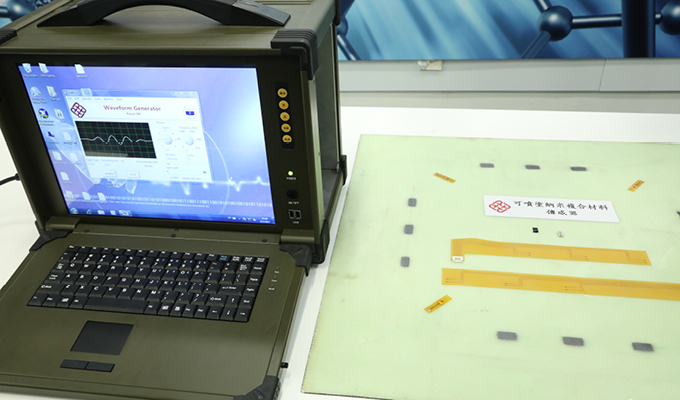Prof. Su Zhongqing and Prof. Zhou Limin at the Department of Mechanical Engineering explain how their newly developed sprayable sensing network technology can improve real-time structural health monitoring with larger responsive bandwidth, lower cost and greater versatility.
What are the limitations of conventional ultrasound sensors?
Conventional ultrasound sensors made of lead zirconate titanate are often limited by their cost (over US$10 each) and weight (a few grams each). They are usually stiff and unable to adapt to curved structural surfaces, adding additional weight and volume to the host structure to which the sensors are to be mounted.
How do the novel nanocomposite sensors overcome the above limitations?
Our nanocomposite sensors adopt an innovative fabrication technique through spraying, which makes the installation process much faster compared to conventional means. Their excellent flexibility allows them to be adapted to various types of structure surface. This new breed of sensors costs only US$0.5 and 0.04g each which are much cheaper and lighter than conventional ultrasound sensors. As such, more sensors can be adopted in one structure for structural health monitoring. They can then generate more information for analysis.
What are the special features of the novel nanocomposite sensors?
Made of a hybrid of carbon black, 2D graphene, conductive nano-scale particles, and polyvinylidene fluoride, the nanocomposite sensors can flexibly be tailor-made into different sizes for various engineering applications. Also, each sensor is connected to a network via a wire printed on the structure. By analysing the electrical signals converted from the electric resistivity, the network can spot the defect in a structure, and translate the signals into 3D images.
How does the sprayable sensing network technology monitor structural health?
To detect a structure’s health condition, this technology encompasses a sensor network with a number of sprayed nanocomposite sensors and an ultrasound actuator. When the ultrasound actuator emits guided ultrasonic waves (GUWs), the sensors will measure the waves. If there is any damage in the structure, such as a crack, propagation of GUWs will be interfered by the damage, leading to unique wave scattering phenomena as captured by the sensor network. Based on the scattering of wave, the damage can be characterised quantitatively via an all-in-one system.
What are the applications of this new technology?
Given the light weight and excellent flexibility of nanocomposite sensors, they can be applied to moving structures like trains and aeroplanes. This has paved the way for a new era of real-time structural monitoring in enhancing the structural safety.
